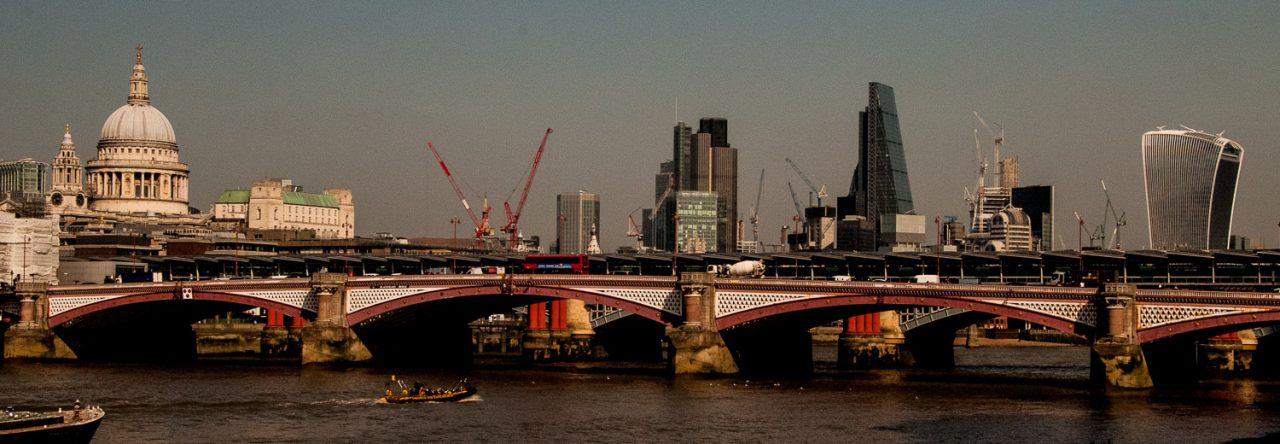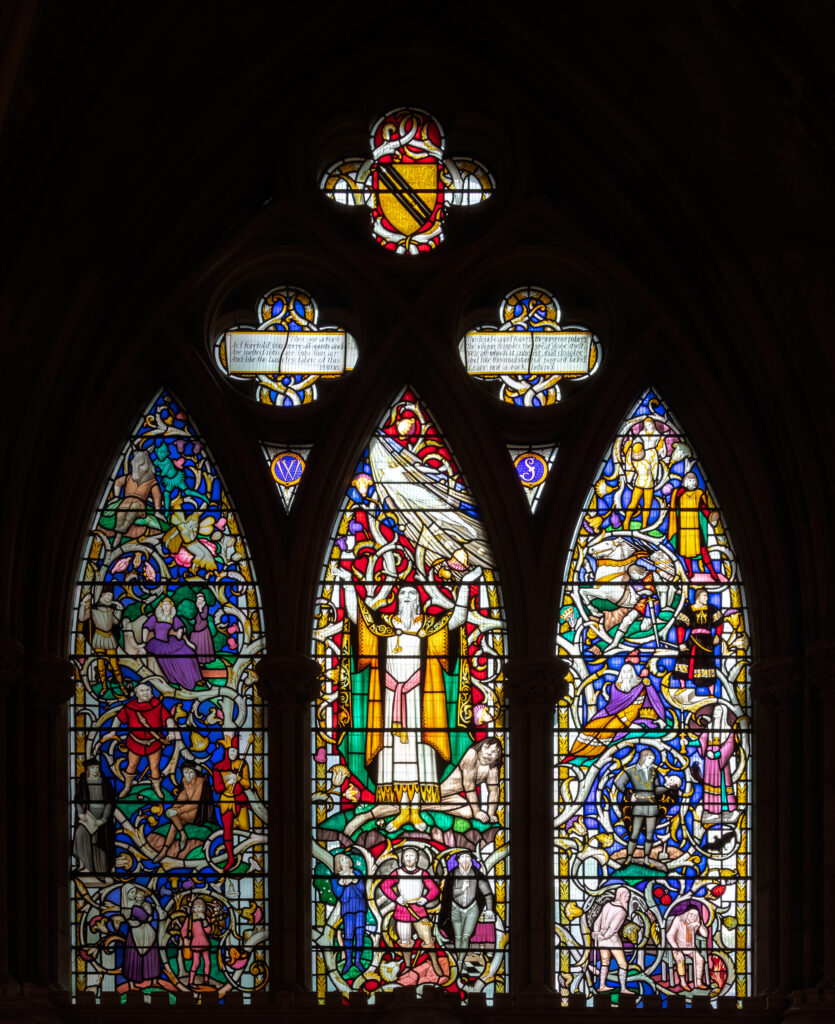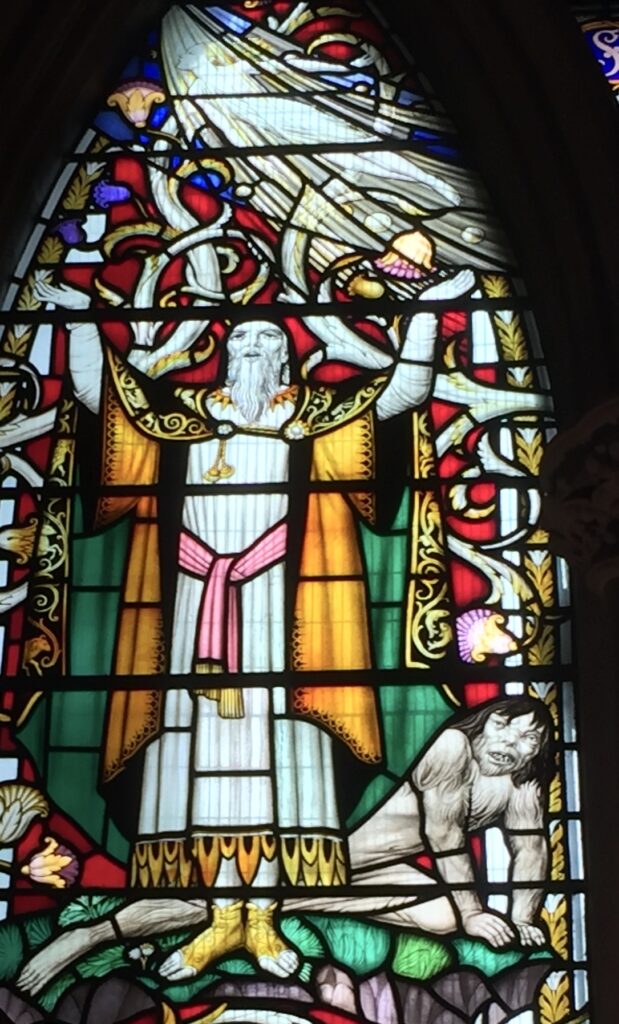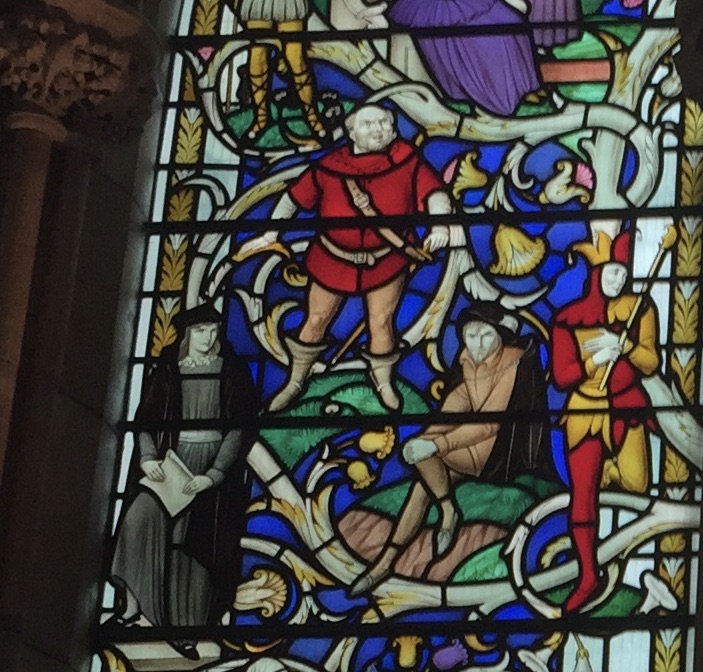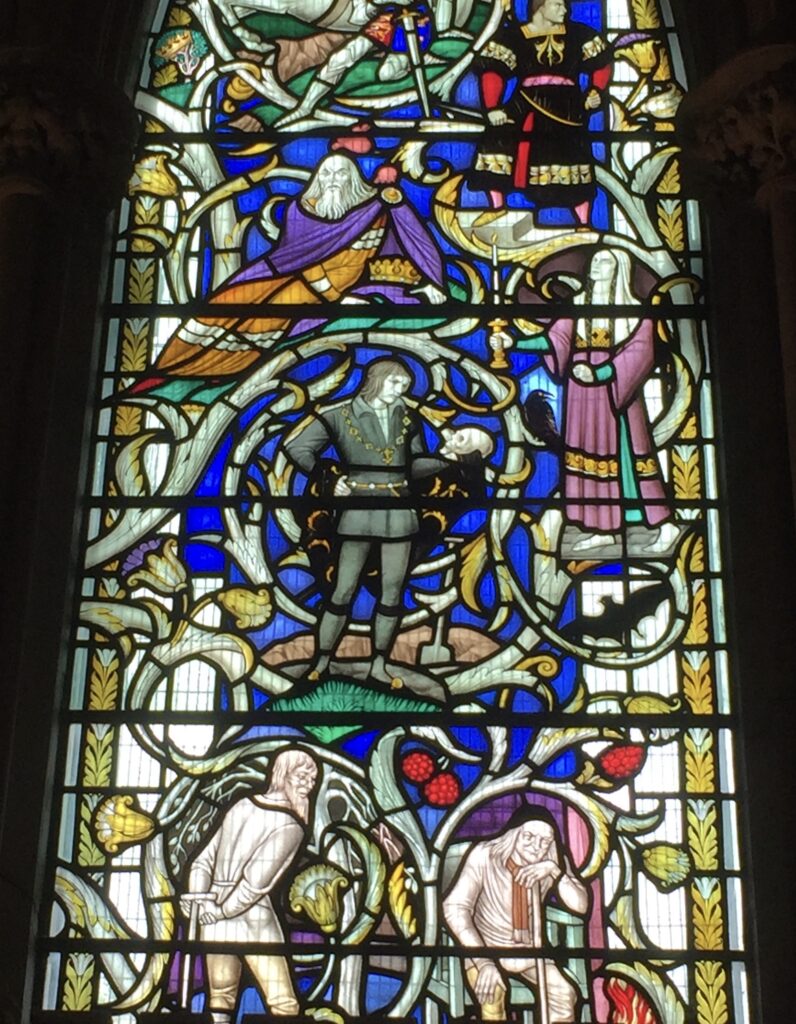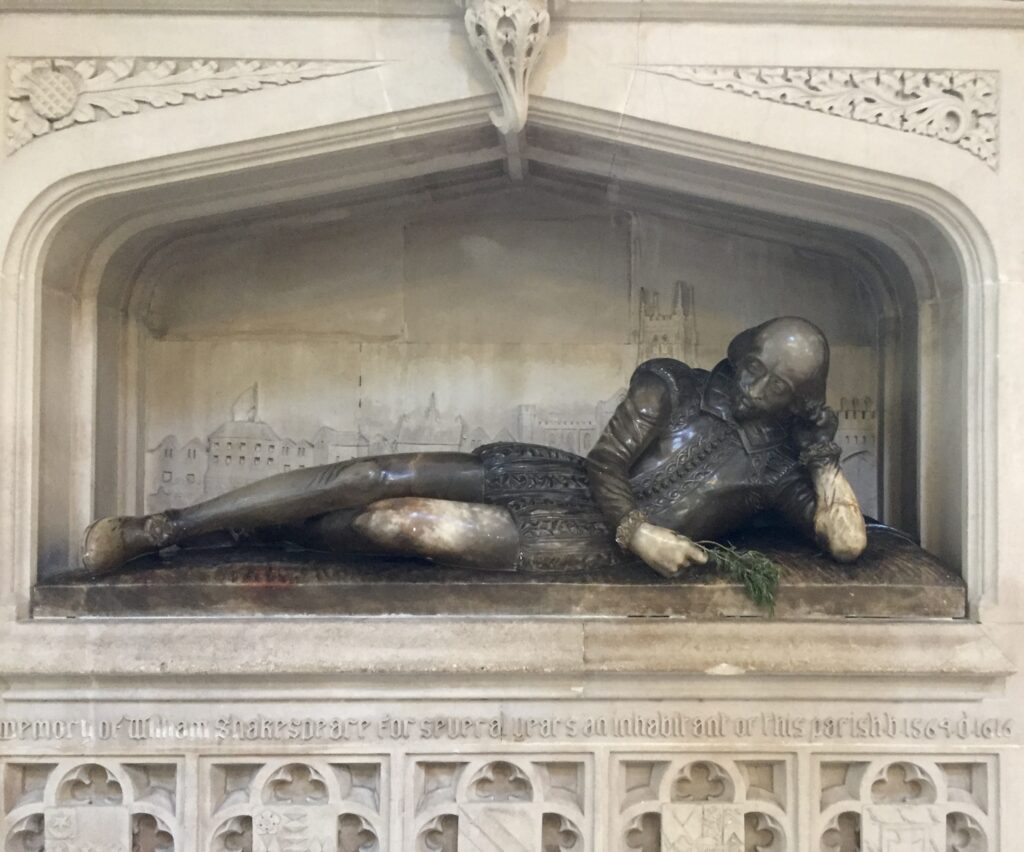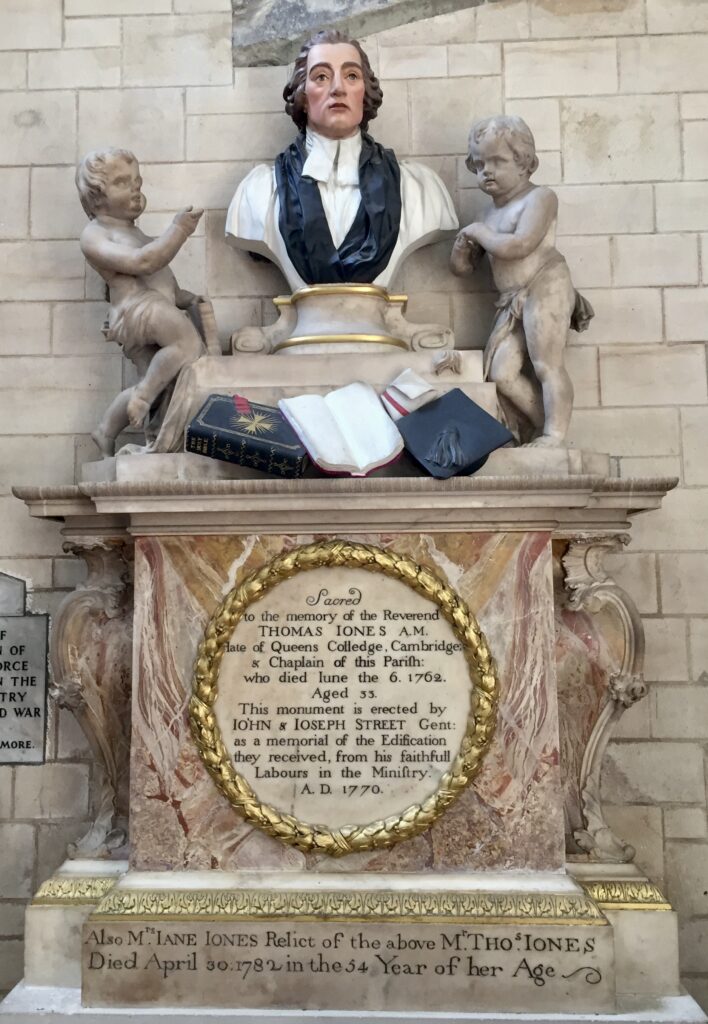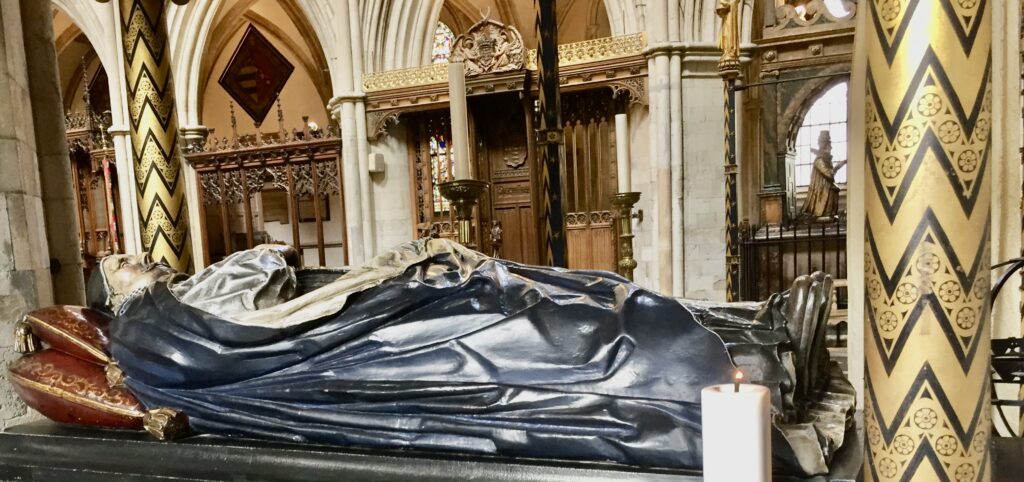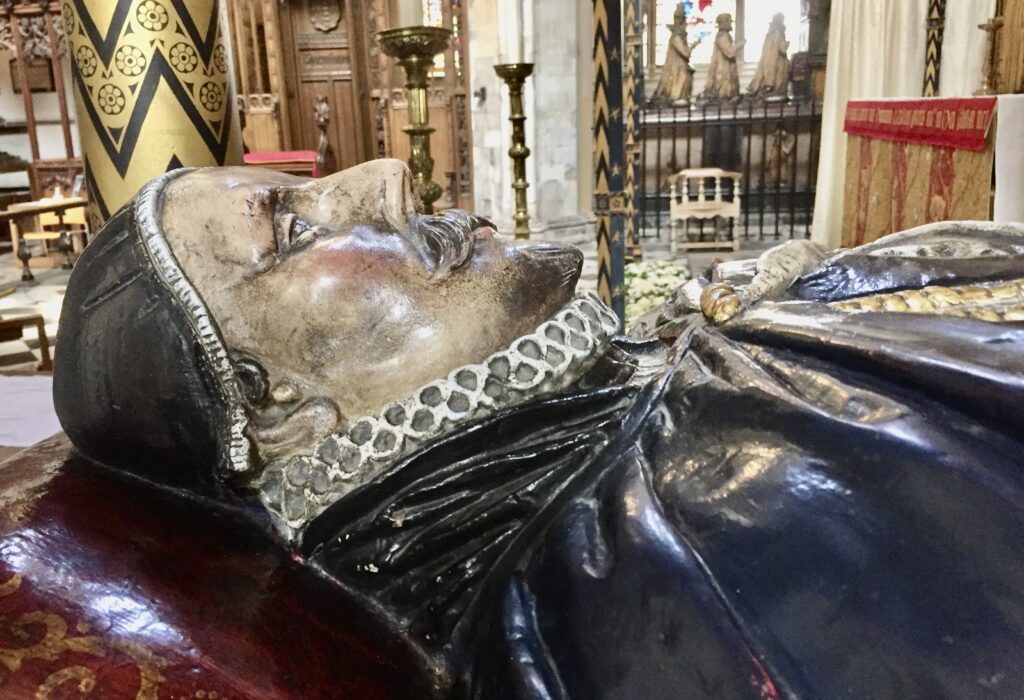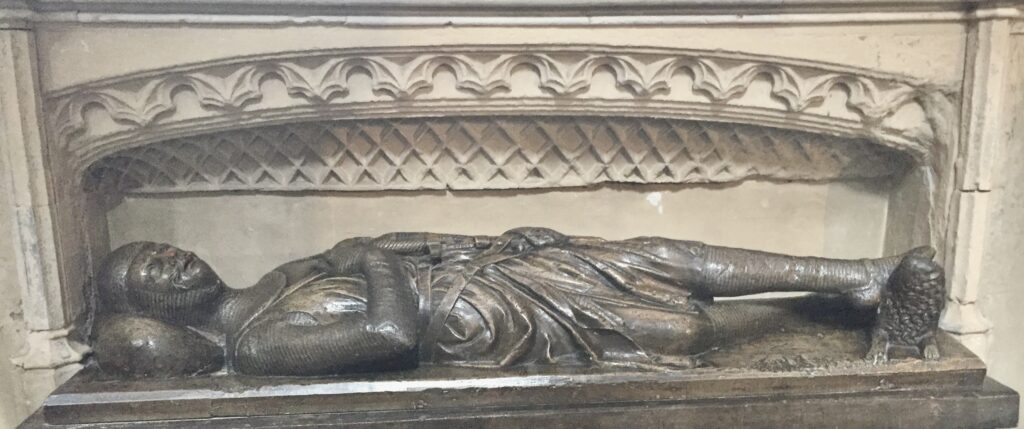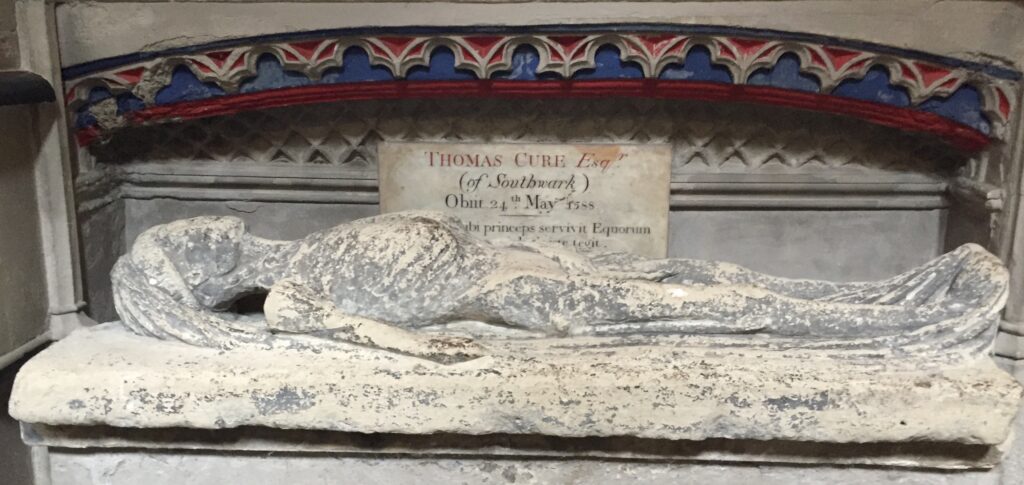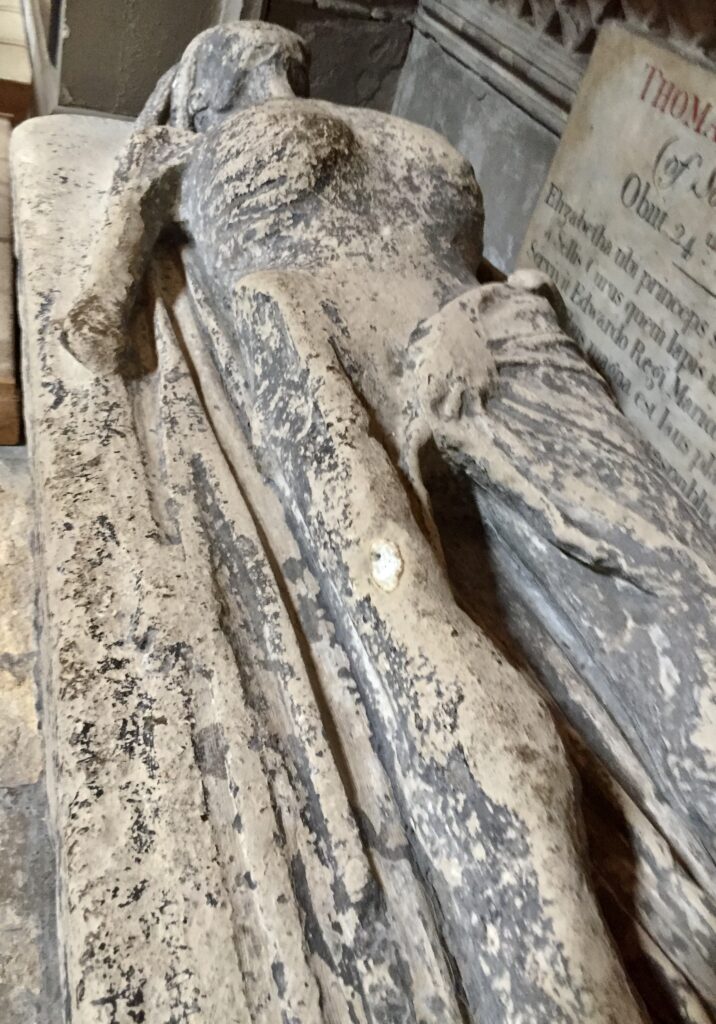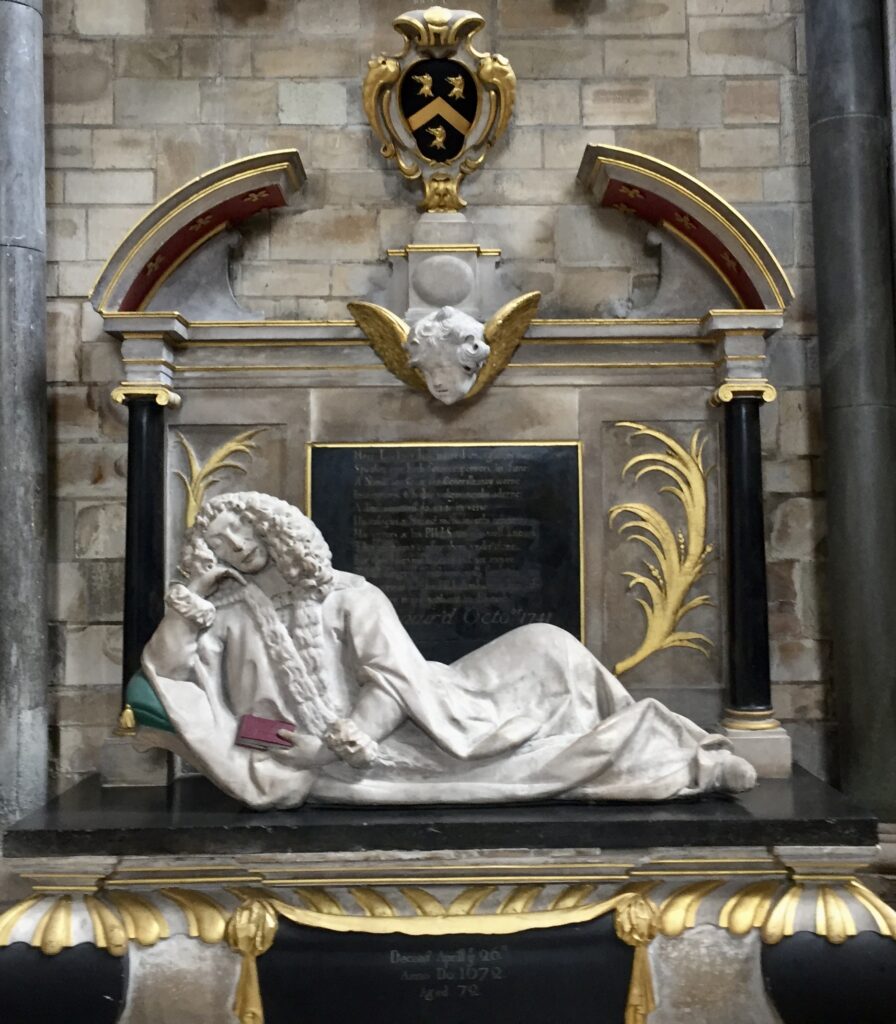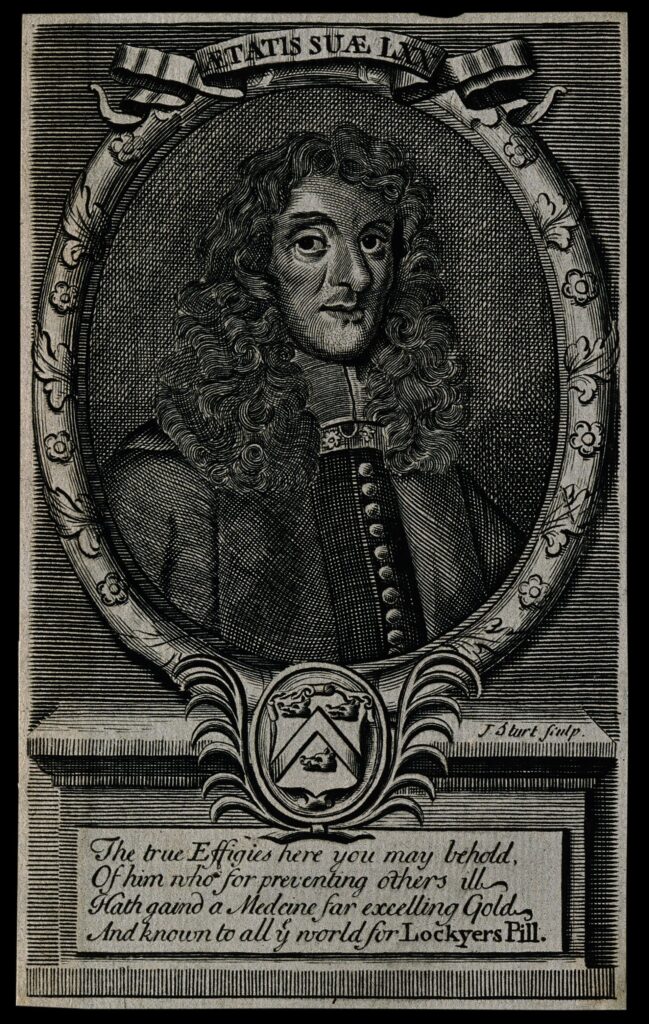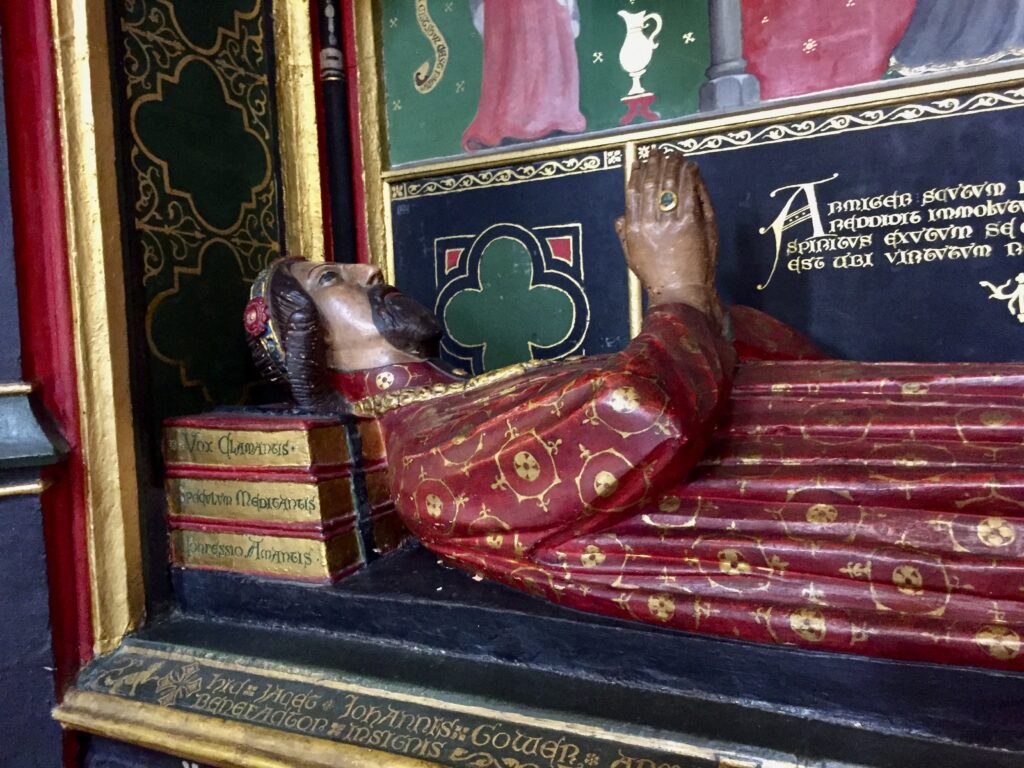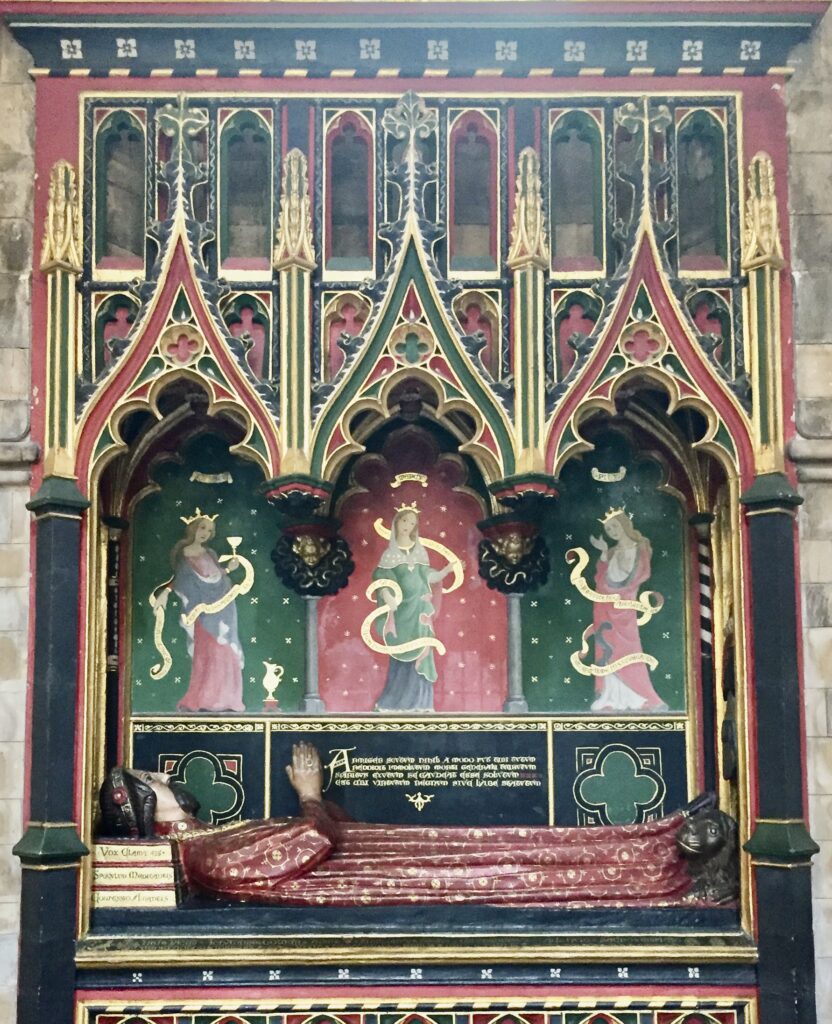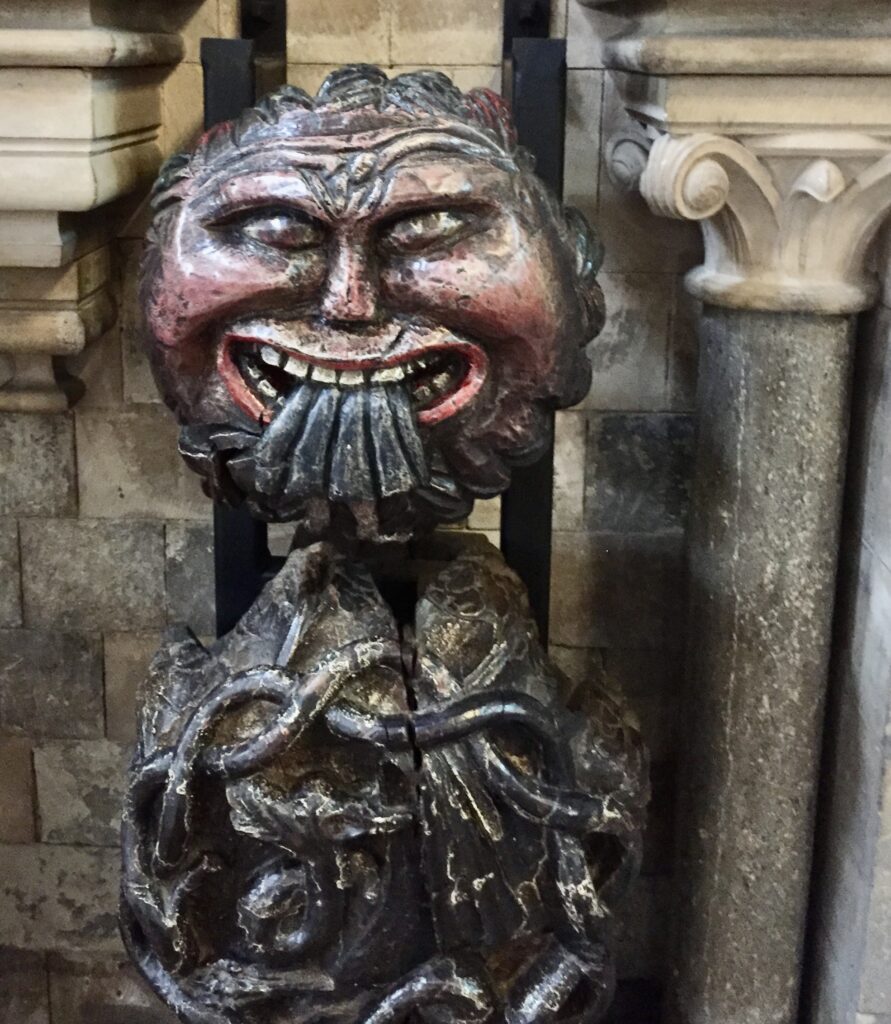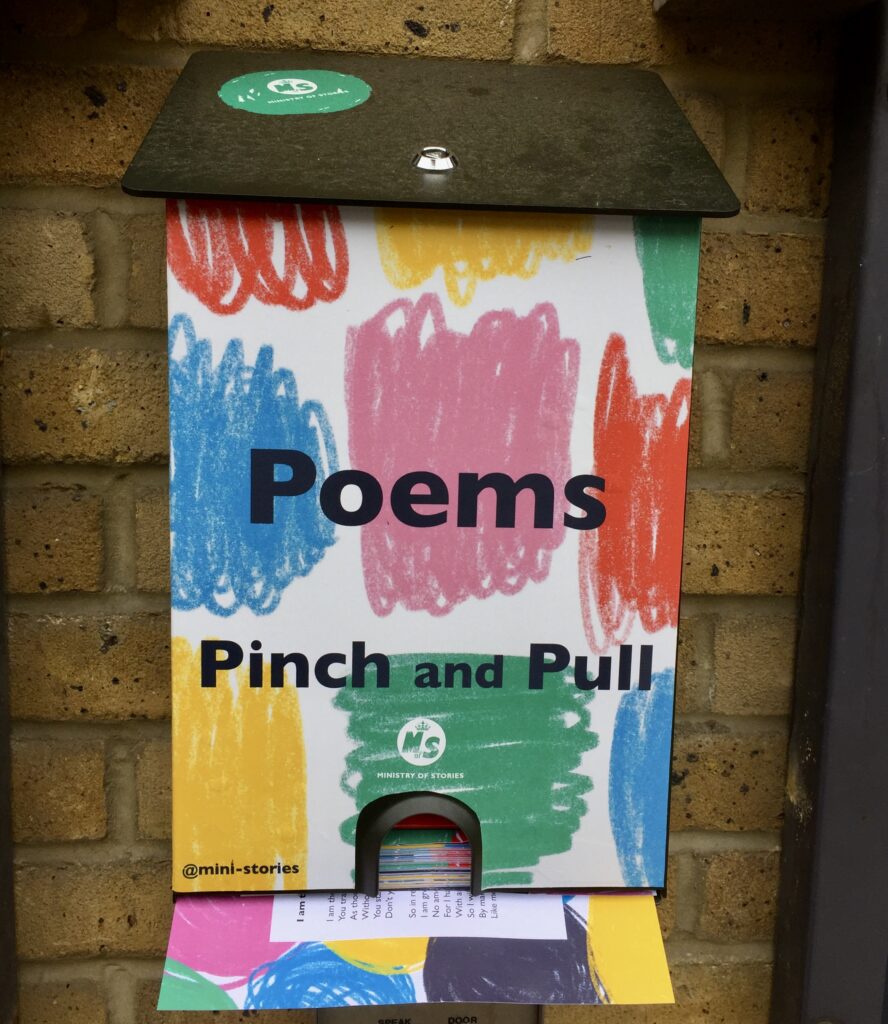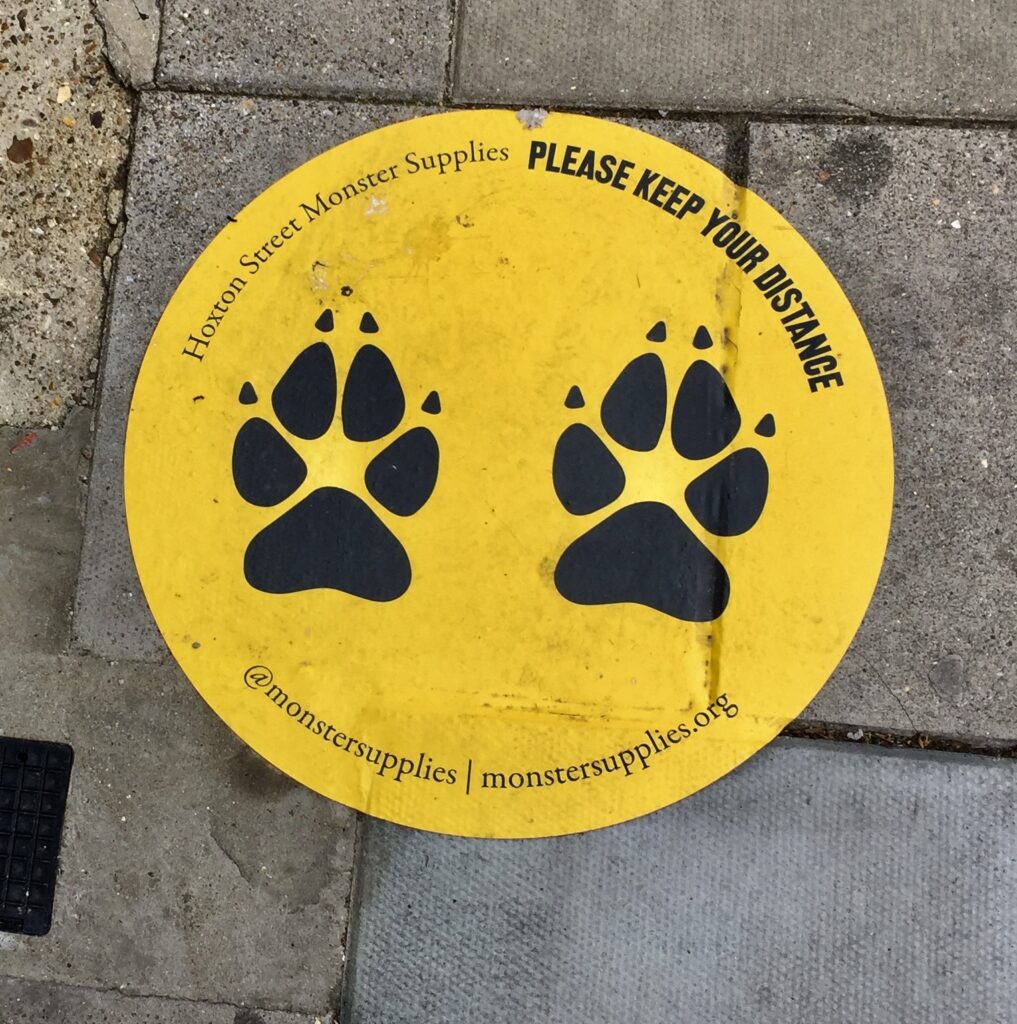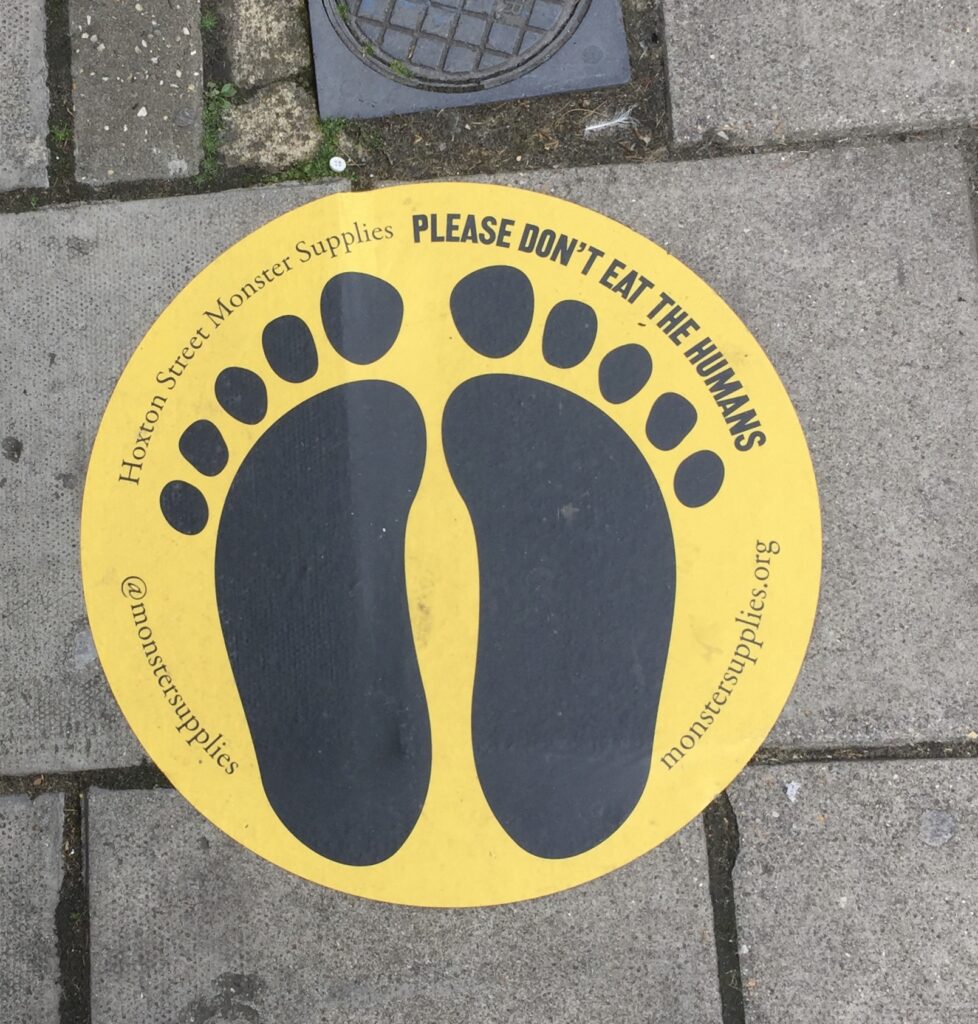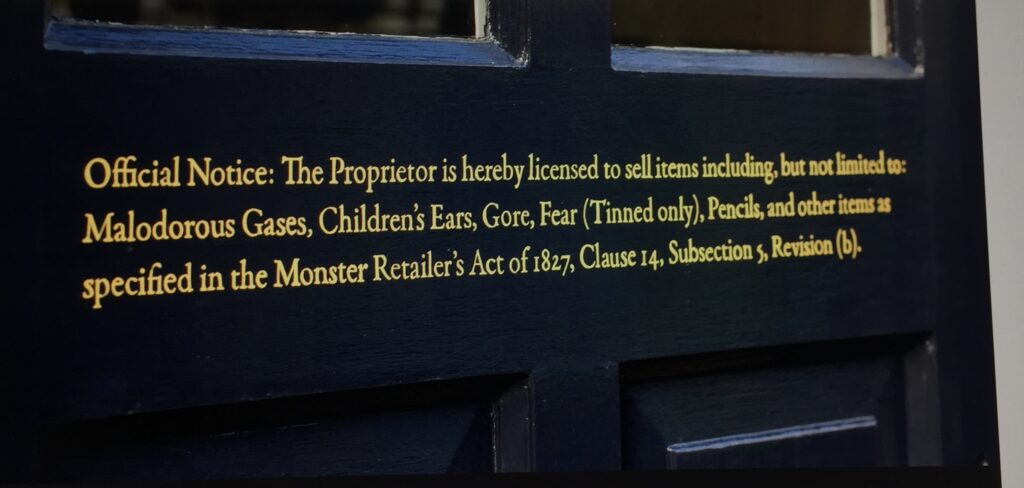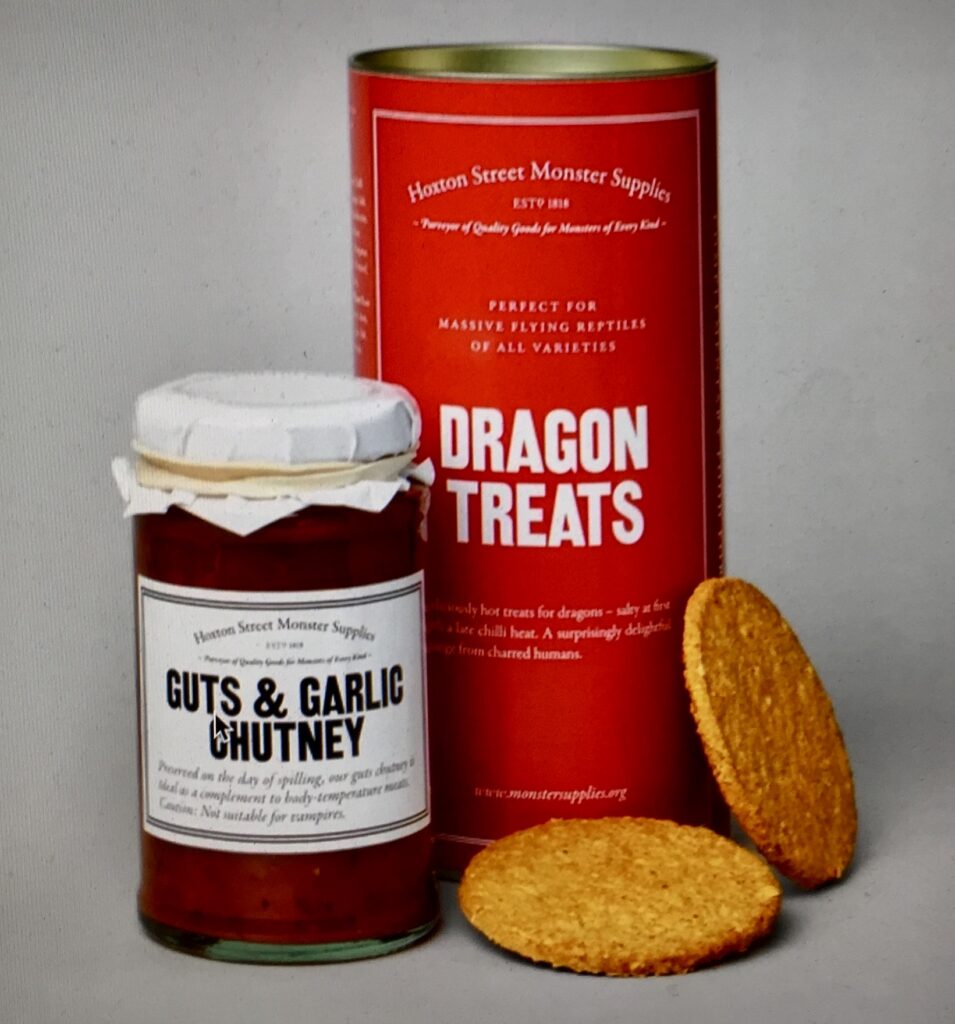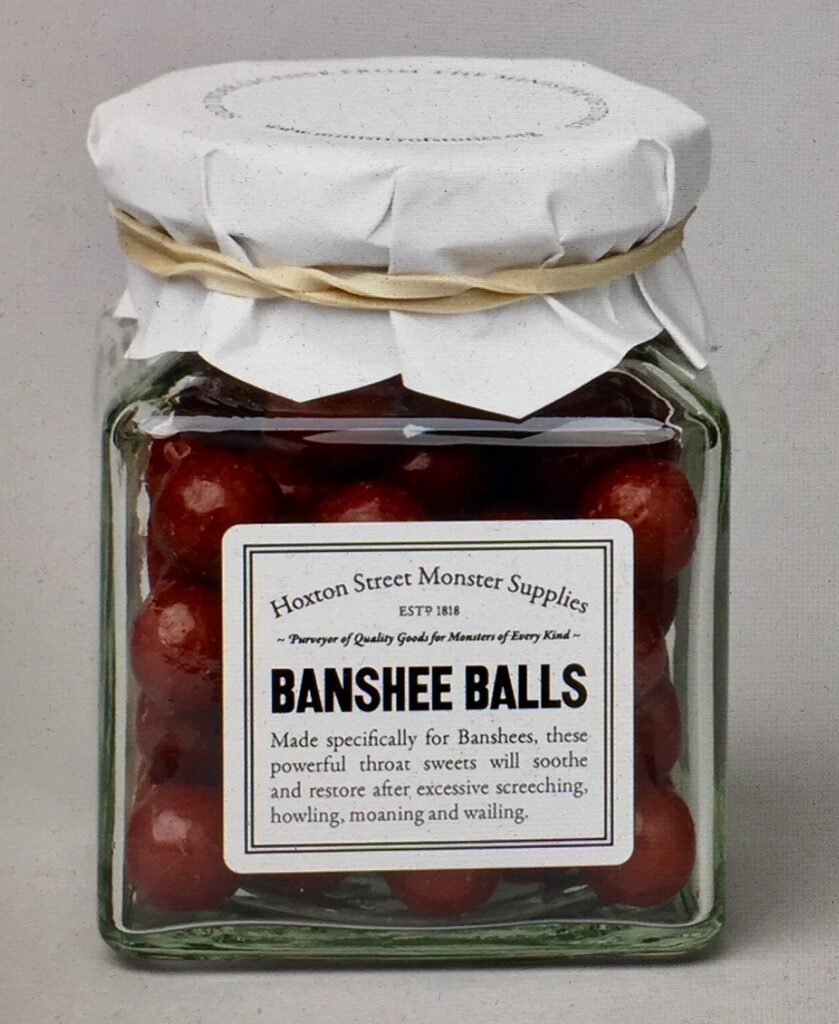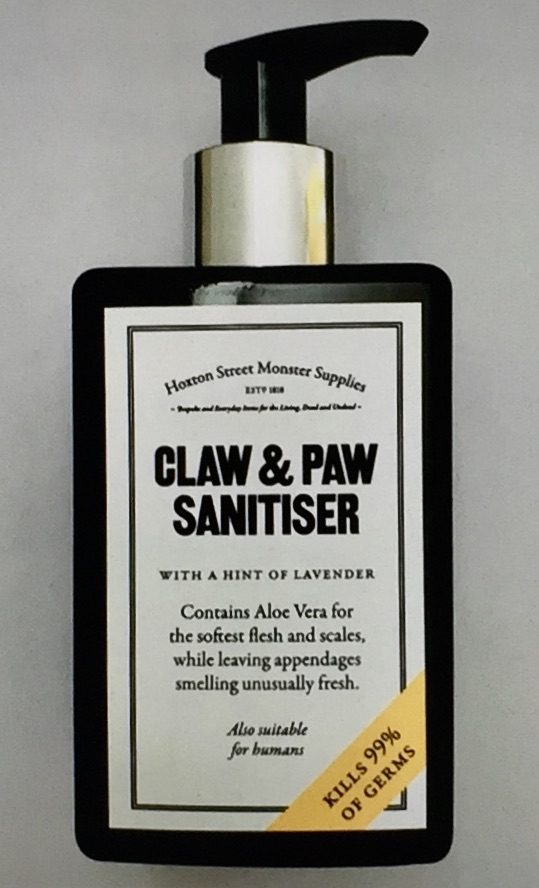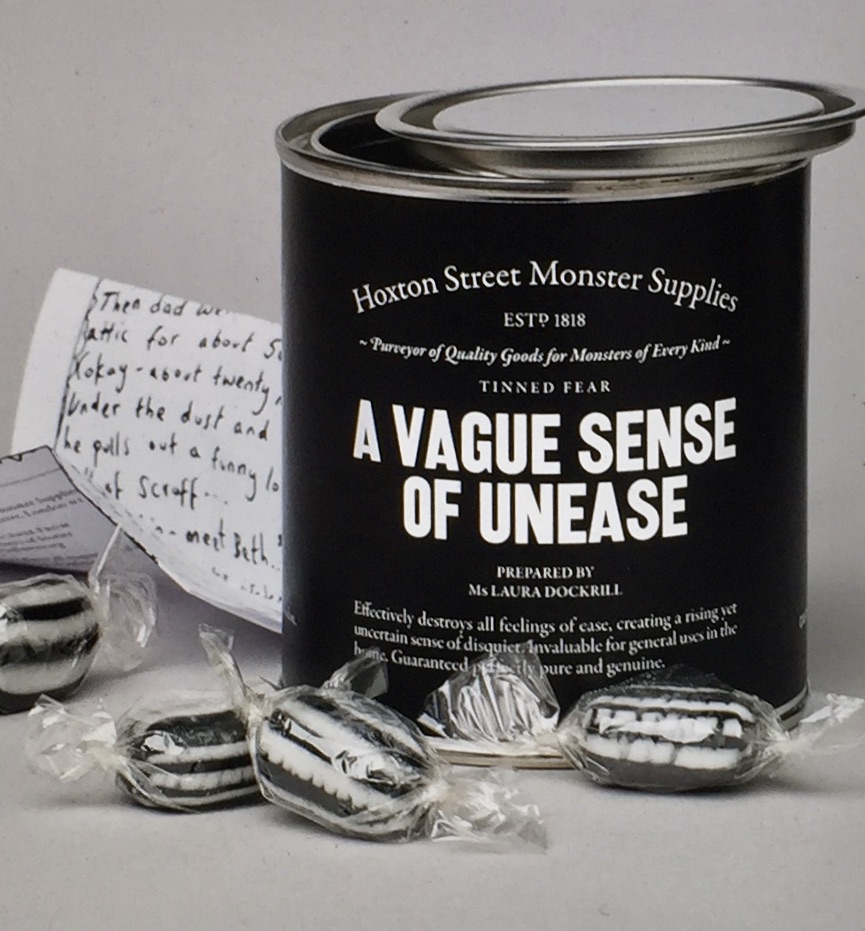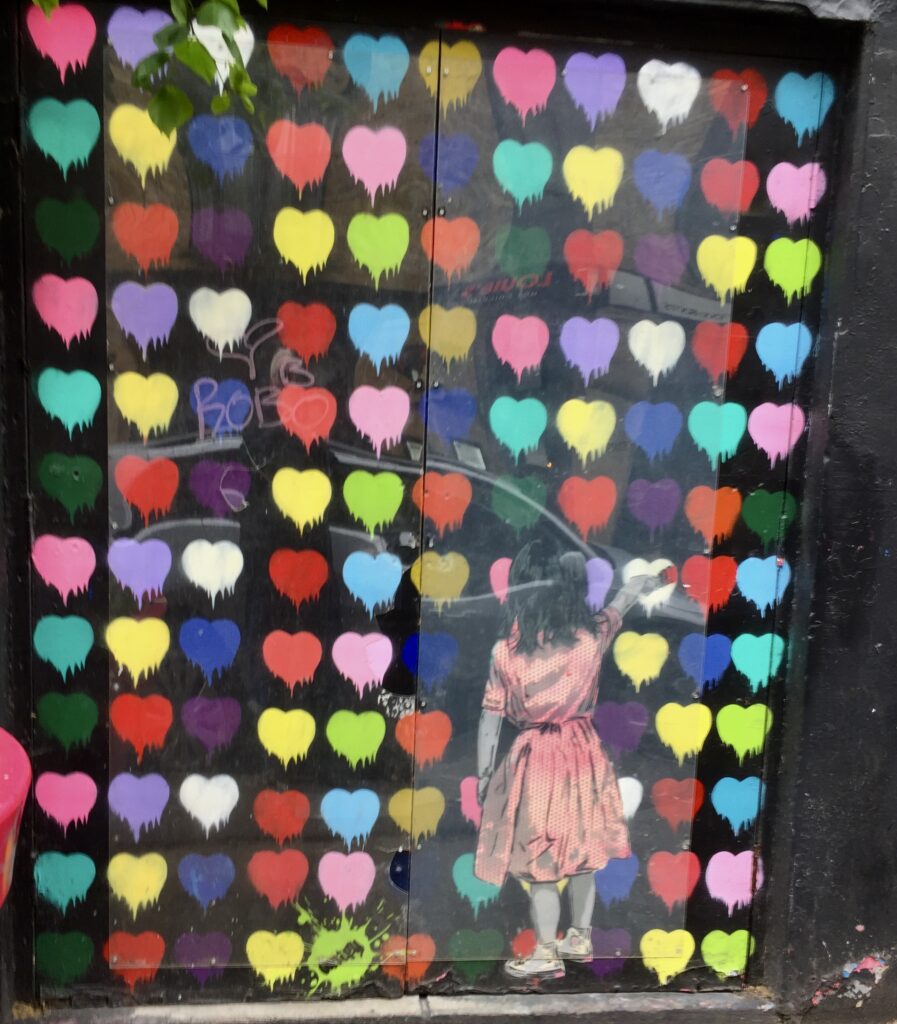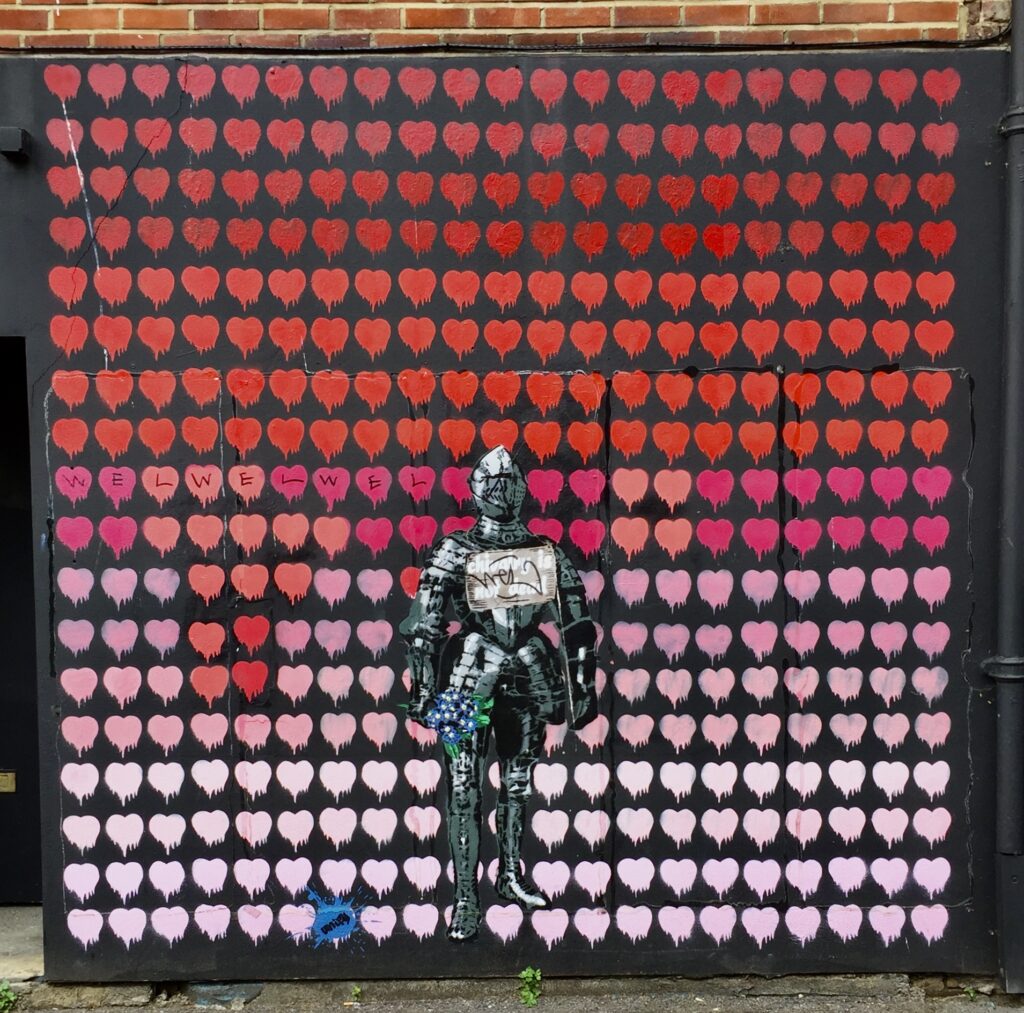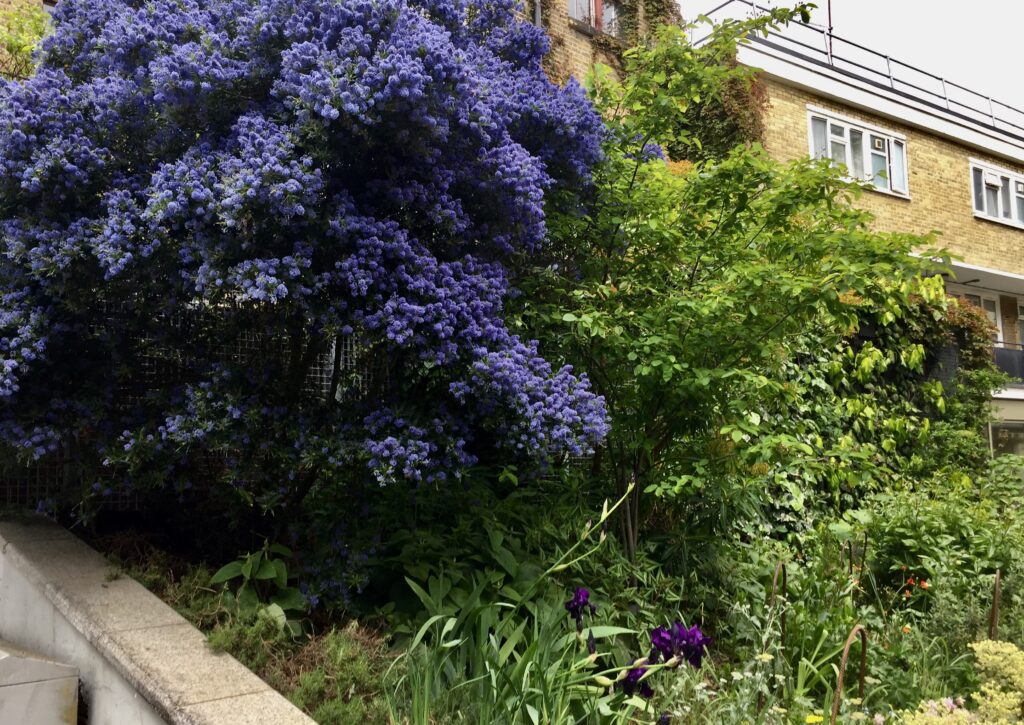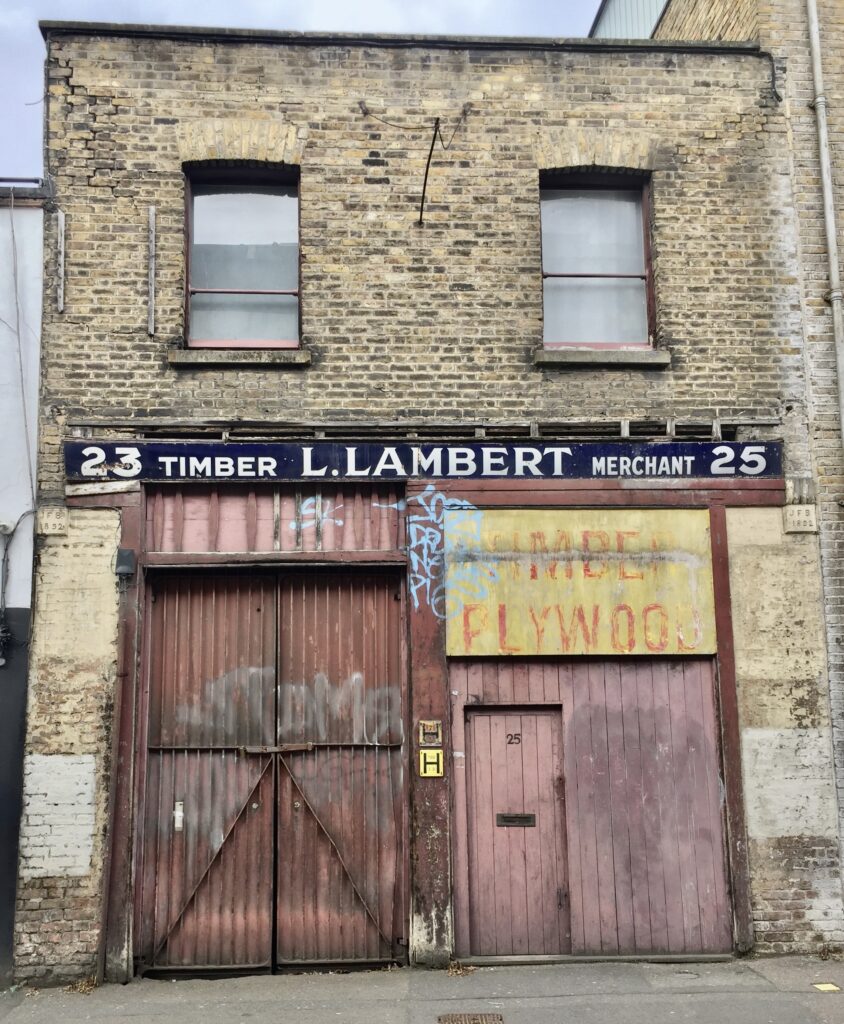For an expression of grim determination, it would be hard to beat the look on this man’s face …

This is the St Saviour’s War Memorial on Borough High Street, in the former parish of Southwark St Saviour (SE1 1NL). St Saviour’s Church became Southwark Cathedral in 1905 …

An infantryman in battledress advances resolutely through thick mud. He carries a rifle with bayonet attached slung over his shoulder …

Beneath his feet is a Portland Stone pedestal depicting St George doing battle with a dragon.
On the opposite side there is a carving of a mourning woman. Her child is reaching out to a dove …
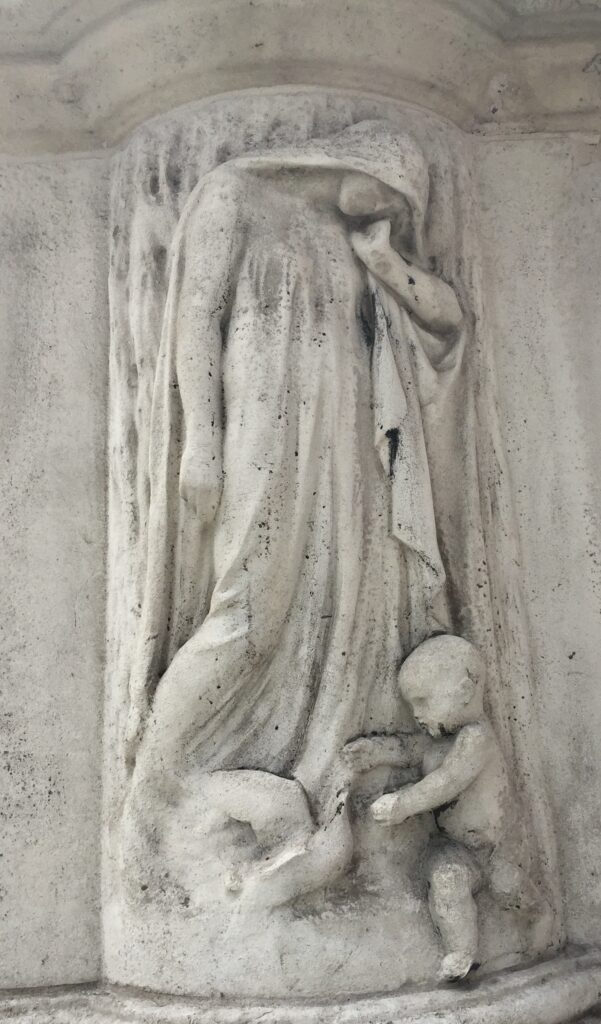
On the pedestal’s long sides are bronze reliefs.
One with biplanes, to the west …
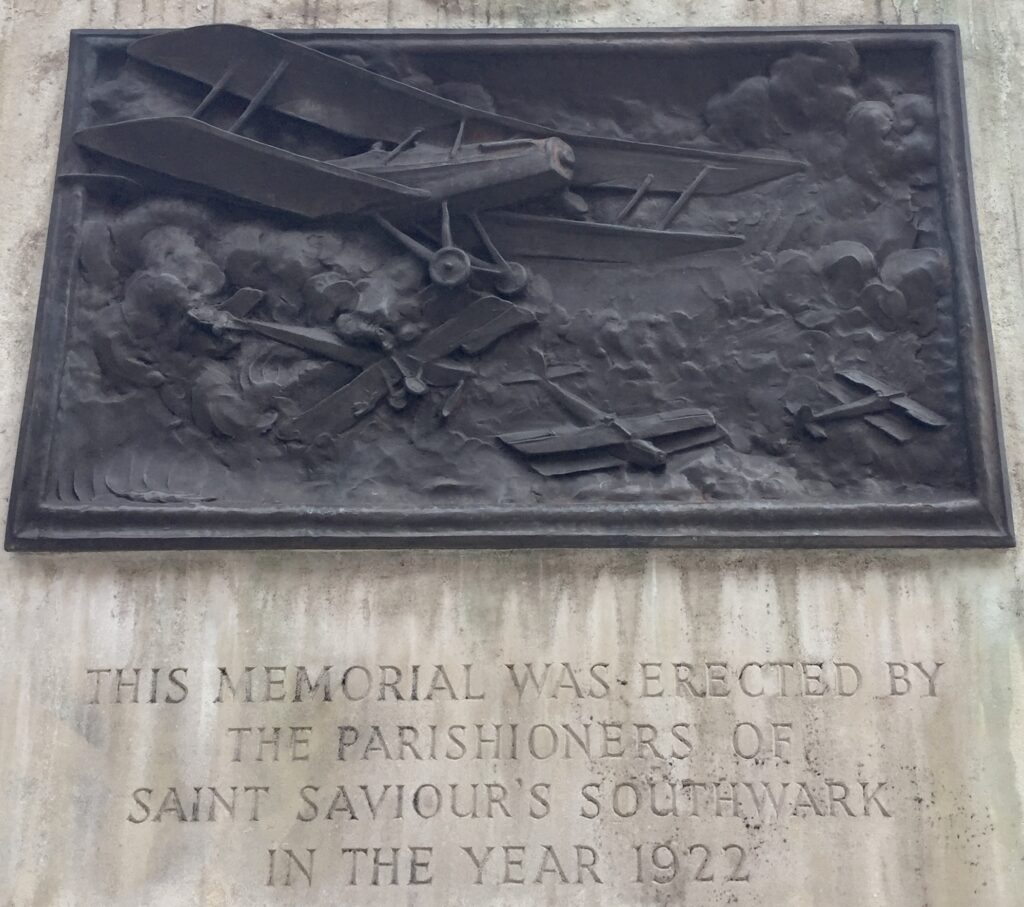
… and another with battleships, to the east.

The memorial’s sculptor was Philip Lindsey Clark (1889-1977). Having joined up with the Artists’ Rifles in 1914, he had distinguished himself in the First World War having been awarded the Distinguished Service Order (DSO) for ‘ … conspicuous gallantry and devotion to duty when in command of the left flank of the Company of the Battalion’. Despite being severely wounded, he had fought on until relieved two days later. In 1926 he created the Bakers of Widegate Street, details of which can be found in my blog On the Tiles again.
The story of the Artists’ Rifles is a fascinating one, it came as a surprise to me that they had one of the highest casualty rates of the First World War. Click here to read a short History of the Regiment (and watch the last scene from Blackadder – ‘Good luck everyone‘).
Walking along Southwark Street, I came across this magnificent, gently curving building called The Hop Exchange (SE1 1TY) …
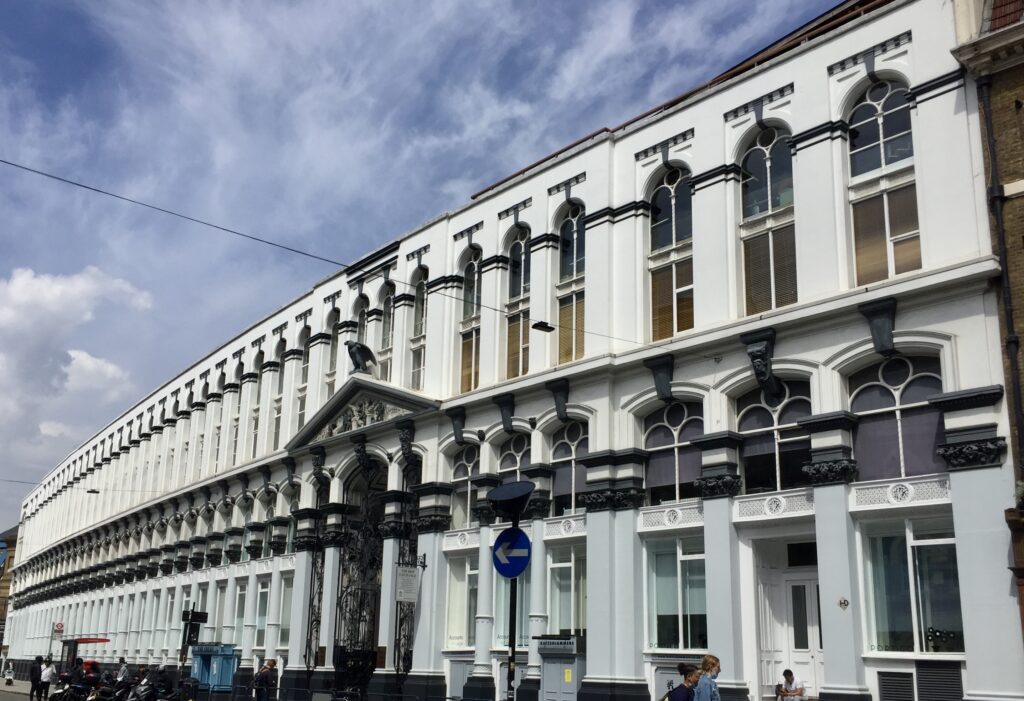
This area in Southwark was where the hops from the southern counties, and especially from Kent, were brought to after the autumn picking. After picking, the hops were dried in the oast houses and then packed into large compressed sacks of 6 by 2 feet, called ‘pockets’. These pockets were then transported to Southwark, first by horse and cart, but later by train …
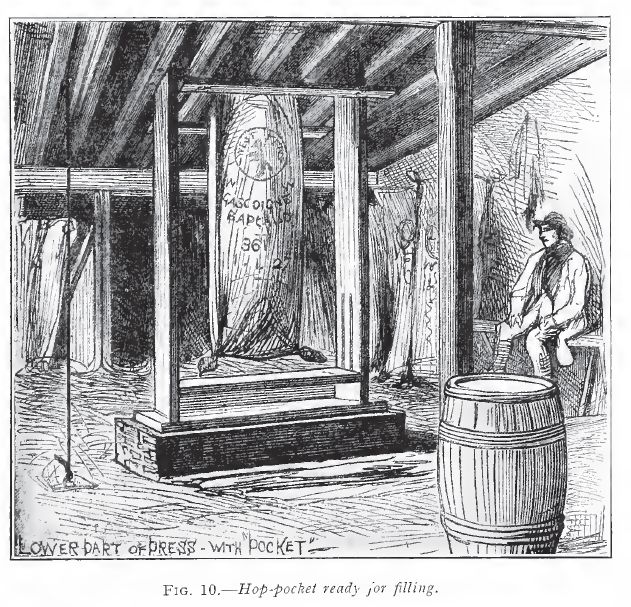
The Hop Exchange was built in 1867 …

You can see the hop pickers at work in the carving contained in the pediment …
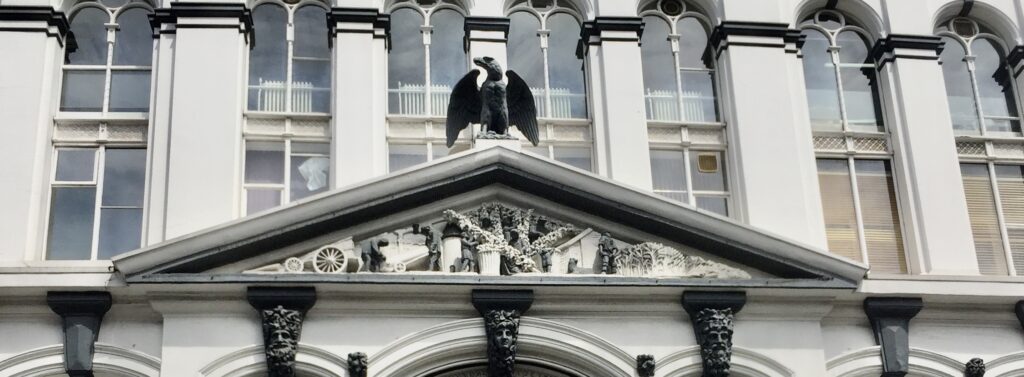
Up to the 1960s, many of the poorer London families went to the hop gardens each September for a working-holiday. Not just for the fresh air, but to supplement their all too meagre income …
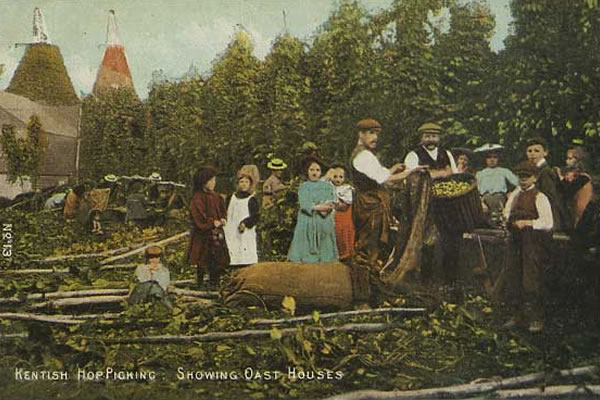
At 67 Borough High Street you can find the former offices of the hop merchants, or factors as they were usually called, W.H. and H. Le May (SE1 1NF). It is a Grade II listed building with a spectacular frieze on the front depicting hop gatherers and proudly displaying the firm’s name. One may easily assume that the building is constructed of red sandstone, but according to the description on the British Listed Buildings site, it is ‘just’ coloured stucco …

A rather romanticized view of picking …
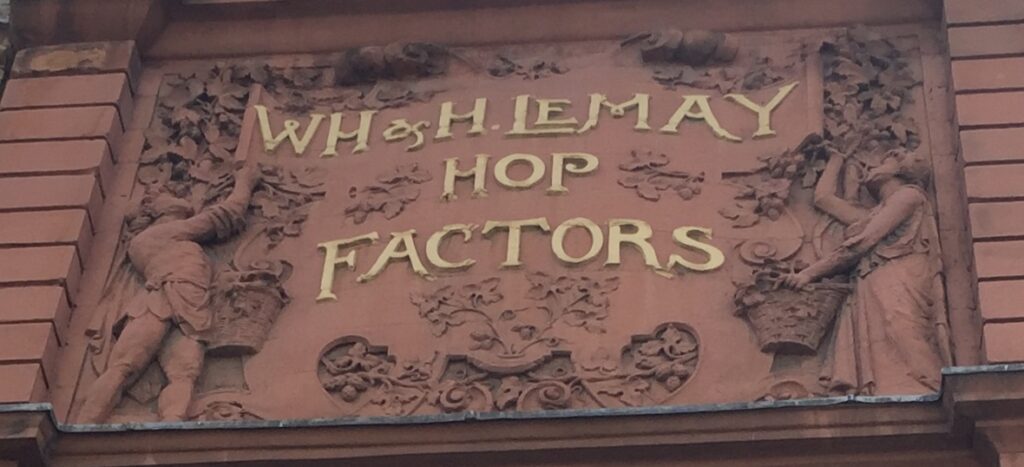
I am indebted to the London Details blog for much of my research. You can read two of the posts here and here.
These flats, Cromwell Buildings in Redcross Street (SE1 9HR), were constructed in 1864 by Sir Sydney Waterlow, founder of the Improved Industrial Dwellings Company, and were modelled after a pair of houses designed by the Prince Regent for the Great Exhibition of 1851. Waterlow set the company up in 1863 with capital of £50,000 and by 1900 it was said to be housing some 30,000 London people …
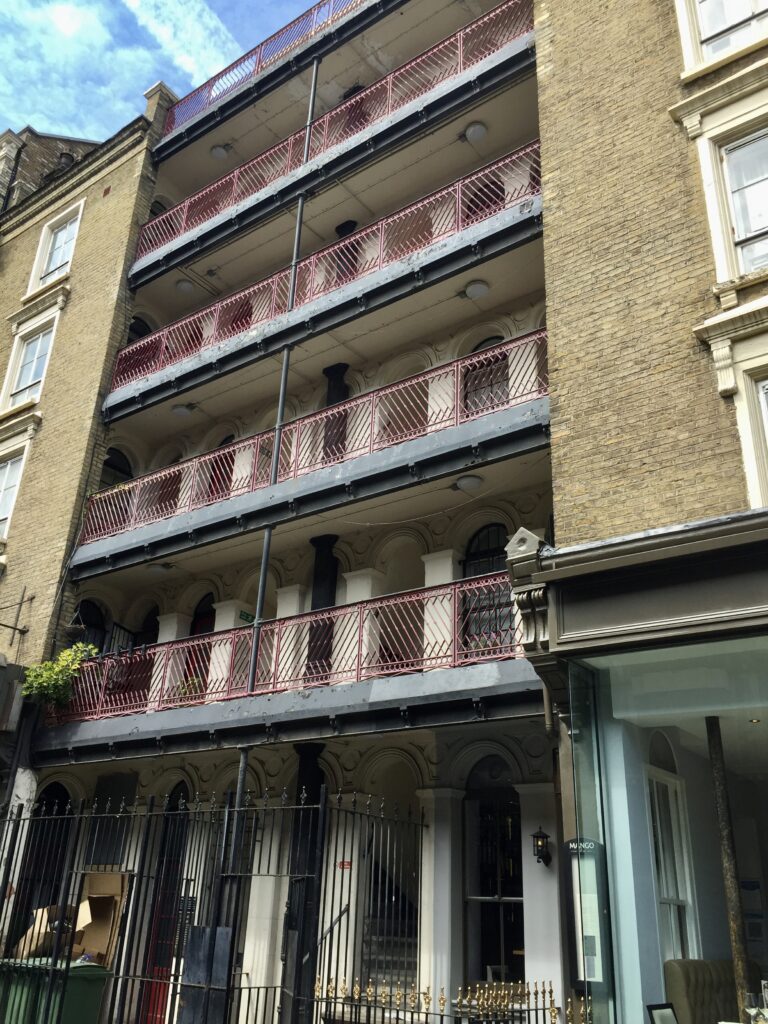
If you ever find yourself in Highgate, do visit the beautiful Waterlow Park (N6 5HD). It covers 26 acres and was given to the public by Sir Sydney as ‘a garden for the gardenless’ in 1889. Seek out this statue of the great man – it’s the only statue I have ever come across of a man carrying an umbrella. In his left hand you will see he is handing over the key to the garden gates …
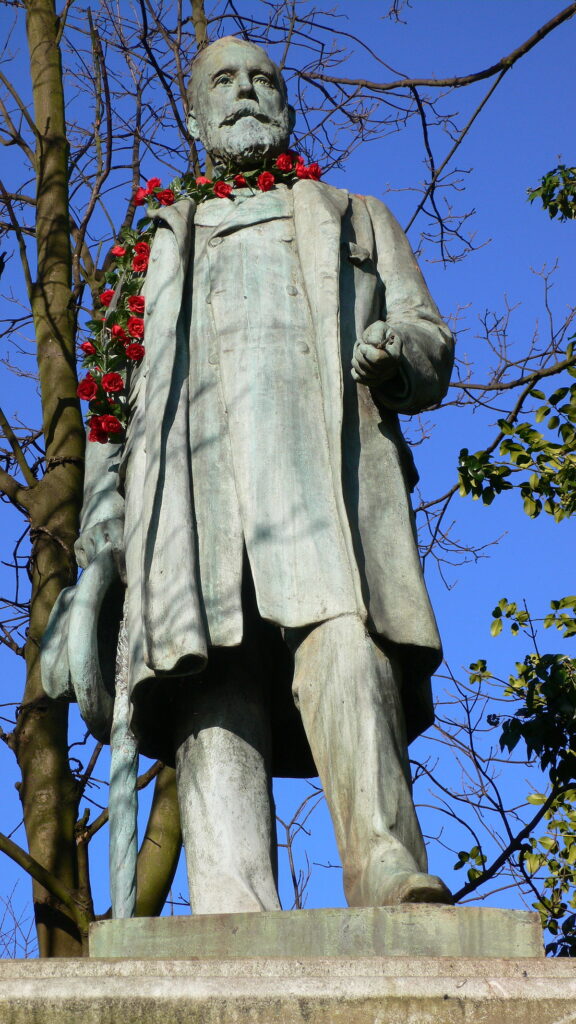
The Friends of Waterlow Park have produced this useful map. If you have time, I strongly recommend a visit to the nearby Highgate Cemetery …
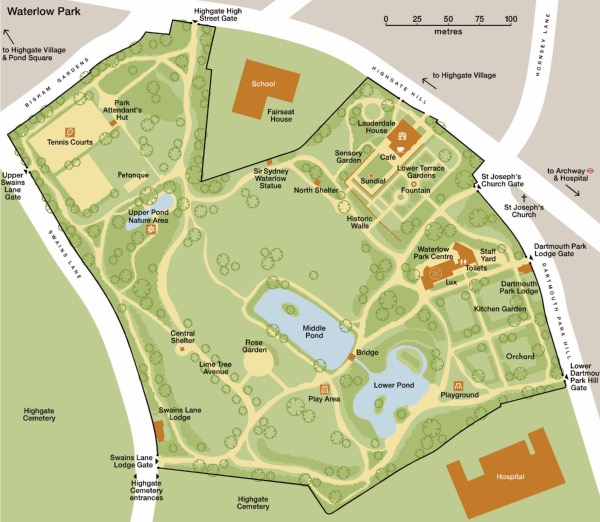
Back in Southwark, if you’re feeling thirsty and a bit peckish treat yourself with a visit to the George Inn, the only surviving galleried coaching inn in London (SE1 1NH) …
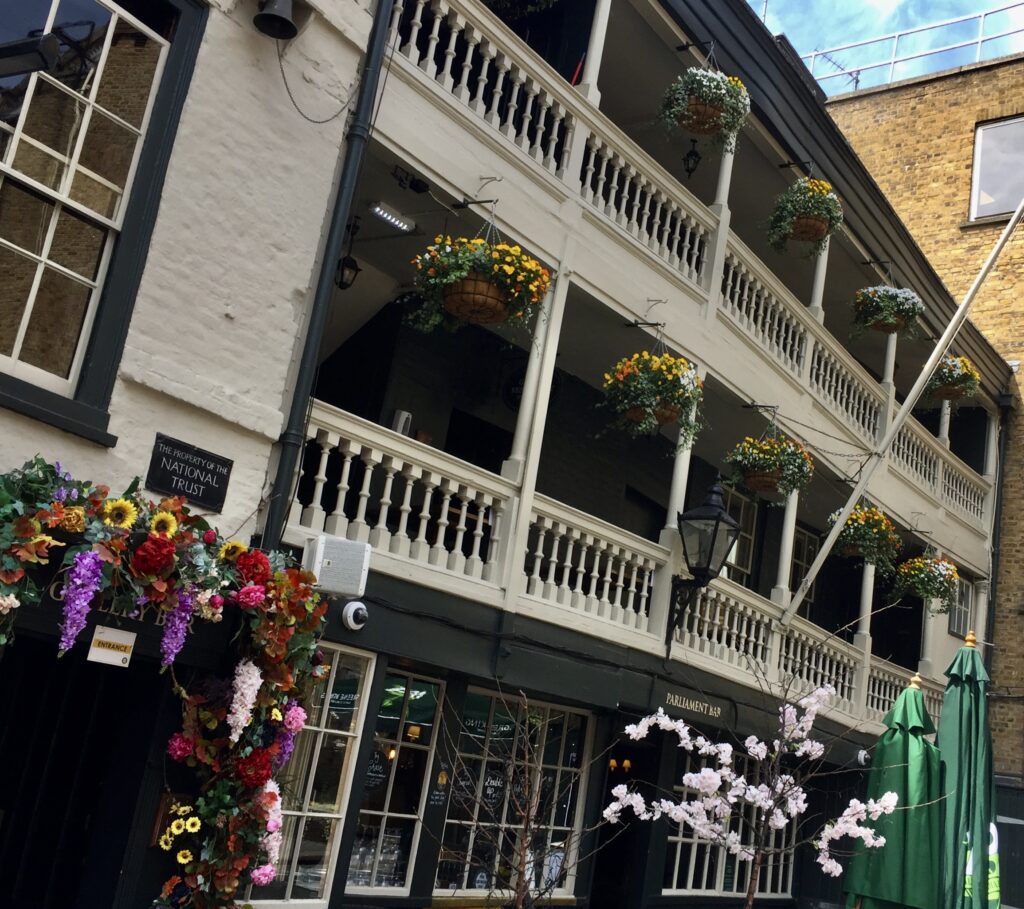
When I popped in to take a photo this made me smile …
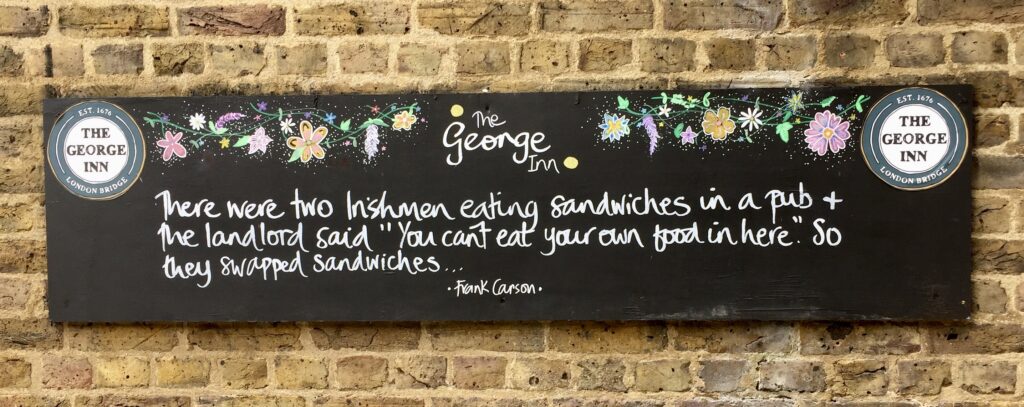
I’ll visit Southwark again when I also go back to the Cathedral.
If you would like to follow me on Instagram here is the link …
